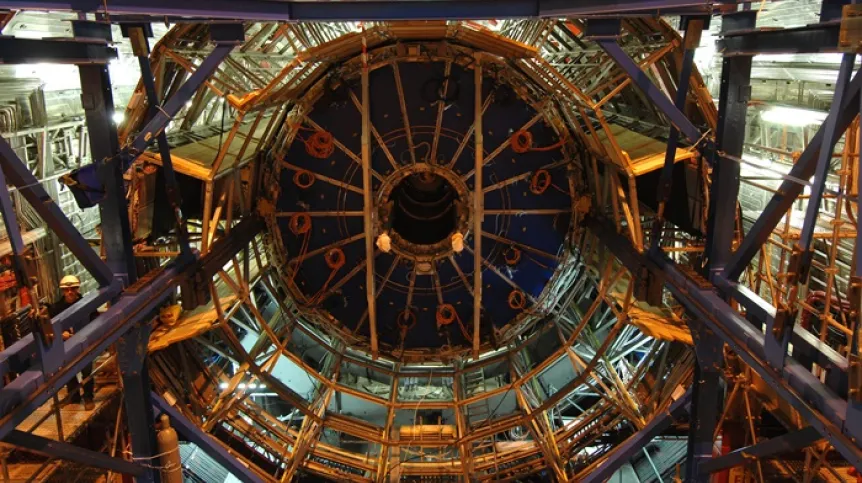
As far as we know, there are four forces in physics that set the world in motion: the strong nuclear interaction, the electromagnetic interaction, the weak nuclear interaction, and the gravitational interaction. The Standard Model perfectly describes the interactions between the first three.
The general theory of relativity, in turn, explains gravity. The problem is that these two descriptions do not fit together that well. Although they explain the world well, they do it in different languages - they do not connect with each other. So we need to find some skeleton key that will combine the four interactions into a coherent whole. The best way would be to observe a physical phenomenon that the Standard Model cannot explain.
Since 2010, researchers working at the LHC accelerator at CERN have been conducting research on Higgs bosons and searching for traces of physics beyond the Standard Model. This time, the team of scientists working at the LHC at the ATLAS detector decided to look for new physics by analysing potential collisions of Higgs bosons - the interactions of the most massive bosons known to date. Thanks to this, we know more about bosons - but there are still no traces of new physics, and stronger constraints on the phenomena of 'new physics' have been found.
Physicists from the ATLAS experiment focused on events leading to the creation of two Higgs bosons, which would then decay into multiple particles of the lepton family (mainly electrons and muons). The results are presented in the Journal of High Energy Physics.
The production of Higgs boson pairs can occur within the Standard Model itself, but it is such a rare process that it has not been possible to observe it in the data collected so far.
There are, however, theoretical models describing phenomena beyond the Standard Model, predicting the production of Higgs boson pairs with a higher probability. Observing instances of this sort of production using already collected data would confirm the existence of a hitherto unknown class of physical phenomena. It is not surprising that this very process became the starting point for the scientists in the ATLAS experiment.
'In proton collisions at the LHC, Higgs bosons appear so infrequently that so far not a single event of Higgs boson pair production has been detected, which at first glance seems absolutely necessary if we want to look at interactions between these particles. How, then, can we study a phenomenon that has not yet been observed?' asks Dr. Bartłomiej Żabiński, a physicist at the Polish Academy of Science’s Institute of Physics who coordinated the international team responsible for this analysis.
A discrepancy between theoretical predictions and actual data from the LHC detectors would suggest unexpected properties of Higgs bosons or the existence of new physics. Operating solely within the framework of the Standard Model, the physicists in the ATLAS experiment therefore simulated the signals (together with the background) that should appear in the detectors in the event of two Higgs boson phenomena, and then normalised the results according to the expected amount of data coming from their detector.
The final step was to compare the values thus obtained with those derived from previous observations. The use of machine learning based on decision trees helped in the search for these rare processes.
'So far, we have not noticed anything in the data from our detectors that disagrees with the Standard Model. However, this result does not rule out the possibility of the existence of +new physics+ phenomena, but only informs us that their possible influence on the production of Higgs boson pairs remains too weak to be seen in the data collected so far', says Dr. Żabiński.
The LHC is to undergo a major upgrade in the coming years. The intensity of the beams will increase tenfold, resulting in a significant increase in the number of recorded proton collisions.
Scientists hope that perhaps at the beginning of the next decade it will be possible to select the first events of double Higgs production from the increased amount of data, and verify today's predictions in direct observations of the phenomenon.
The Polish part of the research work was co-financed by the Polish National Science Centre.
PAP - Science in Poland
lt/ zan/ kap/
tr. RL













